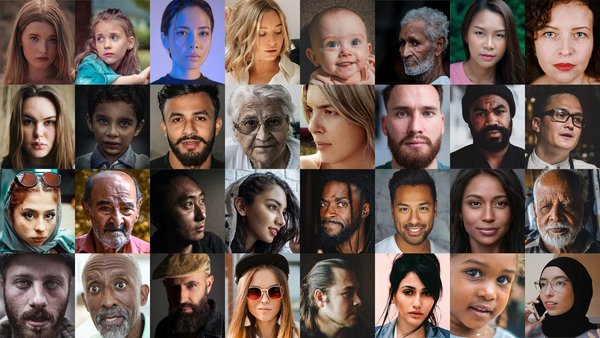Why a speed addiction is bad for creative agencies /
If you want to move fast, you also need to know when to take your time

One of adland’s favourite truisms, a staple of conferences and presentations the world over, is a variation on Ferris Bueller’s worldly observation that ‘life moves pretty fast’. But while the industry loves to stroke its chin and marvel at the pace of change, it often seems to have decided that ‘pace’ is something that happens to other people.
At the 2018 Cannes Lions, Barry Wacksman, EVP and global chief strategy officer at R/GA, called time on that attitude. When it comes to the survival of not just clients, but agencies, he said: ‘Speed is going to be the great differentiator.’
In a seminar entitled ‘Transformation at Speed’, Wacksman and his colleagues delivered a brisk wake-up call to agencies that are coasting: ‘As an industry we’re not really set up to move fast. We have business models that reward us for moving slowly… If you bill by the hour then you’re incentivised to drag things out.’
That, of course, is not the R/GA way. According to Wacksman, its pricing is based on outputs and deliverables, a model that rewards the agency for a faster turnaround, but it’s aligned with the interests of the client because everything is about speed.
In a world where clients increasingly look to agencies to help catalyse their own transformation journeys, the need for speed exposes the limitations of the traditional players. ‘One of the reasons they’ve found it so difficult to reinvent is because they’ve been built on cultural storytelling,’ suggests Nick Law, the R/GA alumnus newly installed as CCO of Publicis Groupe. ‘Change is a design problem, not a storytelling problem.’ The industry, he believes, has sold itself on its own model even more successfully than clients.
As an industry we’re not really set up to move fast. We have business models that reward us for moving slowly
Barry Wacksman, R/GA
‘This inability to move on from the Bernbach team – art director, copywriter, something invented in the late 1950s – it’s because they’ve been telling stories about that to themselves for so long it’s become an article of faith. They need to restructure. They need to start from the bottom.’
And they need to get a move on. Clients determined to move at the speed of culture are lowering the latency on creative work by bringing it in house, either setting up their own teams, or turning to in-sourcing specialists to embed teams within their brands. The leader in this field, Oliver, doesn’t feel the need for a fancy sell, but the case laid out on its website would give any CMO pause: ‘Oliver provides clients with dedicated agencies. We do this because we believe the traditional model is not fit for the speed of modern marketing.’
There’s been a certain sniffiness from established agency players to the Oliver modus operandi. Nevertheless, validation has come from high-profile clients such as Unilever, which credits U-Studio, the in-house content agency established by the company, with helping it save $250m in 2017.
According to Unilever’s annual report, U-Studios is ‘creating content for brand teams faster and around 30% cheaper than external agencies’. That content was described by Aline Santos, senior vice-president of marketing, as ‘quick-fixes, easy, digital’. For ‘strategic thinking’ it will continue to work with agencies MullenLowe, J. Walter Thompson and Ogilvy.
That combined approach calls to mind behavioural economist Daniel Kahneman’s book Thinking, Fast and Slow where he explains how two systems in our brain guide our choices by operating in a coordinated but independent way. System One takes care of on-the-fly, instinctual decisions, almost like a reflex. System Two handles the bigger picture stuff, making a smaller number of carefully considered decisions.
For some time now, Contagious has argued that the same should be true of your company, whether you’re a brand or an agency. System Two thinking is your well-thought-out and fully articulated organising principle that need not be revisited and revised regularly: it speaks to the need for longer-term brand-building. System One is your day-to-day decision-making brain, reacting quickly and confidently to whatever challenges may arise, and more concerned with hitting immediate targets and sales goals. The aim for agencies and clients is to effectively marry the two modes so that they are responsive but also strategic. We call this agile long-termism.
Figures from this year’s annual In-House Creative Services Industry Report suggest that internal agencies are on their way to becoming the new normal: 98% of internal creative teams said they will grow or stay the same size, up from 85% in 2016.
Against this backdrop, the launch of R/GA Embedded, a new model of collaboration that will see the agency’s teams working alongside clients seems like another bellwether. Add in the recent inception of Wunderman Inside (led by one James Sanderson, former COO of, er, Oliver) and you’ve got some interesting developments in the race to restructure.
But while speed may well turn out to be the great differentiator, it’s important to remember that speed is not an absolute. If you want to move fast, you also need to know when to take your time.
Contagious is a resource that helps brands and agencies achieve the best in commercial creativity. Find out more about Contagious membership here.
Want more of the same? /
We don’t just write about best-in-class campaigns, interviews and trends. Our Members also receive access to briefings, online training, webinars, live events and much more.







